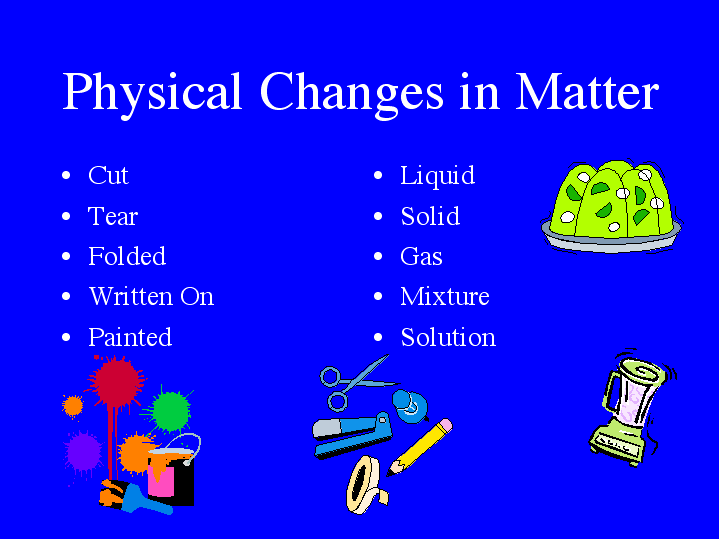

(b) Steam condensing inside a cooking pot is a physical change, as water vapor is changed into liquid water. (a) Wax undergoes a physical change when solid wax is heated and forms liquid wax. In each of these examples, there is a change in the physical state, form, or properties of the substance, but no change in its chemical composition. Other examples of physical changes include magnetizing and demagnetizing metals (as is done with common antitheft security tags) and grinding solids into powders (which can sometimes yield noticeable changes in color). We observe a physical change when wax melts, when sugar dissolves in coffee, and when steam condenses into liquid water ( Figure 2). The different phase changes that matter can undergo. A physical change is a change in the state (Figure 1) or properties of matter without any accompanying change in its chemical composition (the identities of the substances contained in the matter), such as dissolution and dilution. Other physical properties, such as the melting temperature of iron or the freezing temperature of water, can only be observed as matter undergoes a physical change. We can observe some physical properties, such as density and color, without changing the physical state of the matter observed.

Familiar examples of physical properties include density, color, hardness, melting and boiling points, and electrical conductivity. A physical property is a characteristic of matter that is not associated with a change in its chemical composition. The characteristics that enable us to distinguish one substance from another are called properties. The faster they move, the “hotter” it is. If heat is needs to be supplied, the change is endothermic.Īn important distinction, is that heat is energy that flows due to a temperature difference, while temperature is a measure of the average kinetic energy of the molecules in a substance. When matter undergoes change, the process is often accompanied by a change in energy - heat, light, sound, kinetic energy of moving matter, etc… If heat is evolved during a change (is released) the change is exothermic.

In this chapter, we’ll take a closer look at matter and energy and how they are related. Recall that chemistry is the study of matter, its properties, the changes that matter undergoes and the energy associated with these changes.

There was an overall increase of infrared bands assigned to H- and O-containing functional groups, especially carboxylic groups. Mid-infrared spectra indicated changes in the BCs' molecular characteristics upon aging. Yet, small angle X-ray scattering showed that the surface roughness of the BCs increased over time. BC decomposition inferred from the C isotope signature of the incubated materials was marginal. 13C-depleted BCs were incubated for two years in an acidic Planosol and a calcareous Chernozem, respectively. Here, we investigated BC decomposition and changes of BC characteristics during a long-term incubation experiment. Biochar (BC) is increasingly used as soil amendment however, its stability and alteration in the soil environment are still unclear.


 0 kommentar(er)
0 kommentar(er)
